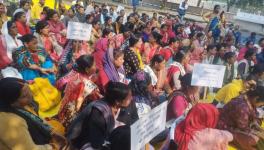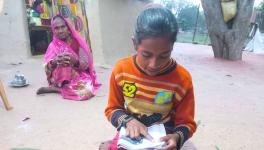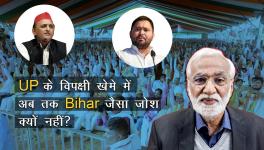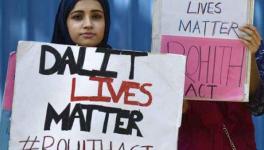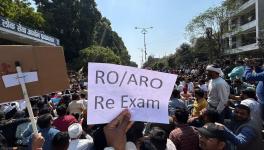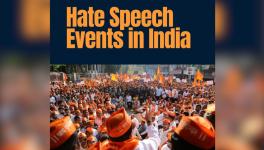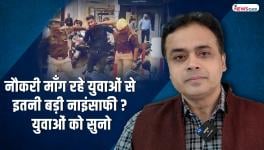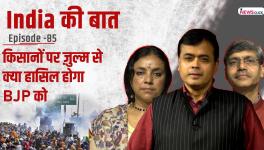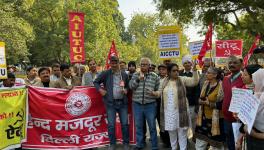Sectarian 10 pm TV Debates Create Hell for Muslims in 9 am Classes
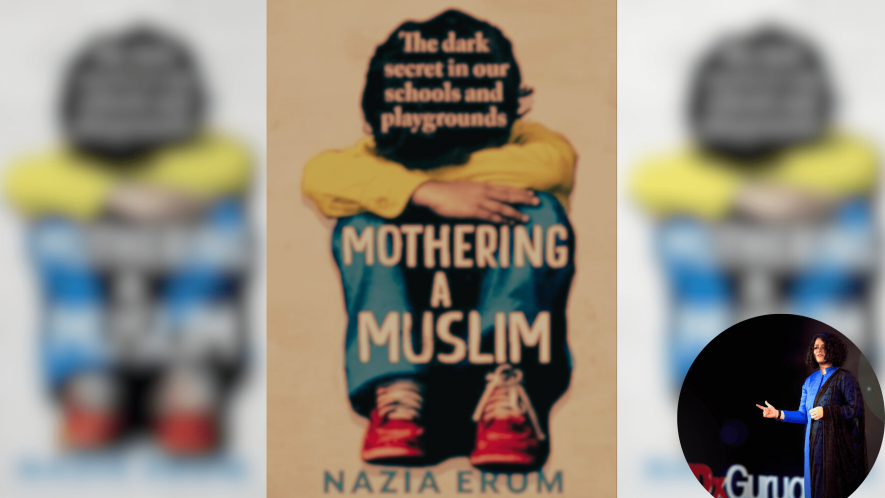
Image Courtesy: Amazon
In late 2017, author Nazia Erum’s first book, ‘Mothering a Muslim’, published by Juggernaut, stirred much discussion for exposing systemic abuse and discrimination against Muslim students in elite schools across the country. Last week, a video of a teacher instigating students to slap their seven- or eight-year-old Muslim classmate “hard” revived debates on the damage done to children by polarisation politics. In the video, this teacher, in a rural school in Uttar Pradesh, also makes offensive remarks about her student’s community. NewsClick asked Nazia Erum to recollect what she discovered during research for her book about the nature of discrimination in Indian schools and the implications for students, teachers—and the country. Excerpts from a phone interview.
Pragya Singh: Your book highlighted, through experiences of Muslim children, their teachers, parents and experts, that communitarian abuse is systemic in elite Indian schools. After watching the video from a school in Muzaffarnagar, do you think it could have been prevented? What explains the teacher’s hostility?
Nazia Erum: One of the things I discovered while writing my book was that mostly, the parents of abused children find out what their young ones are facing in schools when it is already too late. Second, I found the schools and teachers didn’t fully comprehend the full impact of such behaviour and often clubbed it as yet another bullying incident. Many a time going unaddressed or pushed under the carpet. Parents often struggle to find ways to challenge what their children get exposed to at school. It is also an uphill battle to control what some students hear at home, which they then carry with them to school.
As for solutions, I spoke with 125 families in 12 states in 2015 and 2016 for my book. A staggering 85% said they had been ostracised for their religion. Many of the parents I met had devised tactics to deal with abuse towards their young ones. Say a toddler came home and reported that his classmates were asking him to ‘go to Pakistan’, which was a very regular slogan we then heard on Indian TV debates. One parent told her child to take it in the same spirit as being asked to go to other countries in the neighbourhood—Bangladesh, Sri Lanka, Nepal, etc. So, she neutralised an offensive remark in that way.
But I do not think having such ‘tactics’ ready will work today because the hatred is in the air now.
PS: What do you mean by hatred being in the air?
NE: Nobody is asking the more significant questions about communitarian abuse. Nobody is questioning the root causes of the problem, never mind addressing the crisis. We must realise that what is being dinned into our children is a part of political games and that this hate must stop. We must understand this is not about Muslim children but all little kids. Now, after this video of very young children hitting a little boy in a school, we must understand how all children are being made victims of hate and the chaos it brings. If it is not halted, it will suck up all kids, regardless of identity.
PS: Do you think, as is often said, that TV news, in particular, is responsible for how adults behave and what they indoctrinate kids with?
NE: Can we call what we see on TV the news? TV has become a platform for behaviours all Indians once looked down upon, which even the media did not consider TV material. The moment you allow such behaviour on TV, you are making it ‘cool’. When you orchestrate fights on TV debates, you are calling upon people to channel hate, creating a vicious cycle that will never stop.
There is misinformation and disinformation on such a scale that ordinary citizens cannot parse every instance. Imagine, news media has invented things like ‘water’ jihad. How are people expected to counter these narratives without adequate societal effort?
PS: Had you suspected when you wrote Mothering a Muslim that the problem would escalate to this extent, or that it would travel to rural India?
NE: There was no reason not to! Although I focused on elite schools, unfortunately, I learned and feared during the writing process that what is happening across Indian schools, urban or rural, is simply not being documented.
Even today, through social media, people keep sending me accounts of abuse and attacks motivated by hate. But still, the reports remain ‘individual’ in that they are not becoming a part of the discourse in society. Those individuals who have experienced their children being abused hope for a solution, but we must understand there is no magic wand or quick fix.
PS: Has anything changed in city schools and society after your book?
NE: I remember “Islamophobia” was seen as a Western construct when I was writing my book. Few, if any, recognised that its roots are in our drawing rooms and classrooms. When I thought of my book, initially, my husband refused to believe abuse was occurring among children in schools. I wondered how, if I could not convince my family, would I convince anybody else that children were listening to adults engage in hate speech and bringing that to school with them? But once I started researching accounts of people and putting the information together, the extent of the problem dawned on me and people around me!
Second, children growing up with hate are not the ones to blame here—the video from Uttar Pradesh is just a manifestation of the hatred that we are feeding our children. However, since 2017, the kind of hate we see in society has changed. My research indicated that teachers were largely mute spectators—that was already a bad enough situation, but now, it is much worse.
I believe all the stuff our kids repeat to each other at school is what they first hear on the news bulletins at night, often in the words of our leaders. The news bulletins have changed, misinformation and disinformation have changed, and so have the expressions of hate. That’s what makes this situation very worrying.
Rural schools were not my area of research as I looked at urban school-going Muslim students’ experiences. However, all schools must be studied for the kind of behaviours students and teachers engage in. I must add that it came to my knowledge that some schools did put in place systems for students to complain, seek redress, for complaints that fall in the category of targeted abuse.
PS: Is it hard not to wonder if India was better off without social media, especially considering some of the harmful consequences?
NE: Someone shared two identical pictures of the earth taken from space and wrote in the caption that the world is the same before and after you tweeted—so relax! I thought that was funny, of course, but it is so true. Obviously, social media allows people to come together, and we need to do more to make it a space for everybody. We need to understand that not everything we see or read is accurate or credible.
Some parents I met while researching my book told me they don’t watch TV any longer, only some OTT. Okay, but we can only keep away from what is in the air to an extent. We cannot shut out all communitarian propaganda.
For example, not all families may have beliefs like the teacher in the video from Uttar Pradesh, but some do, and those narratives will reach your school-going child whether you watch TV at home or not. The recognition we need today is that the entire population is affected by hate speech.
PS: In that context, did the content of this video surprise you?
NE: It was depressing, saddening, but unfortunately not surprising. Even six years ago, writing about what has been happening in our society—as it reflected in our schools—was not easy. It was scary, to be honest. But the kind of responses Muslims and all who dare to raise their voices and dissent against politics of hate get—the witch-hunt and the fear of reprisal—make today’s situation even worse.
You see, the problem today is that the 10 p.m bulletin is being repeated in 9 a.m classes. Teachers do not seem to realise what they are doing. After all, through TV and other sources, those who spread hate are being given the signal that it is cool to do so. The best, the most important of the country’s leaders, those who are supposed to be role models, are doing it too. So, what can we expect to happen?
Get the latest reports & analysis with people's perspective on Protests, movements & deep analytical videos, discussions of the current affairs in your Telegram app. Subscribe to NewsClick's Telegram channel & get Real-Time updates on stories, as they get published on our website.










